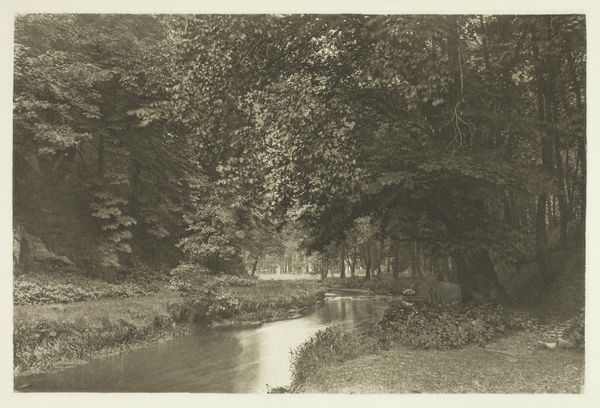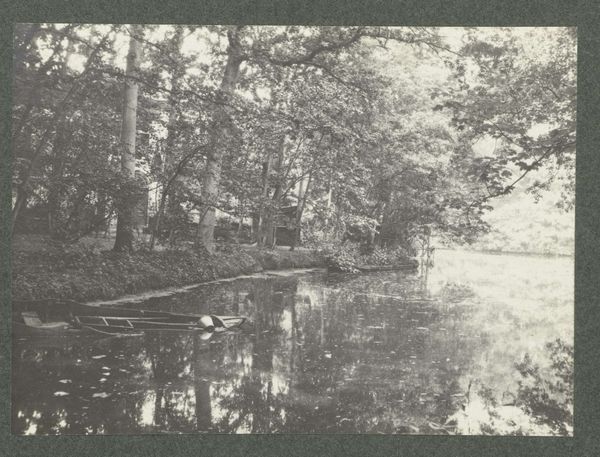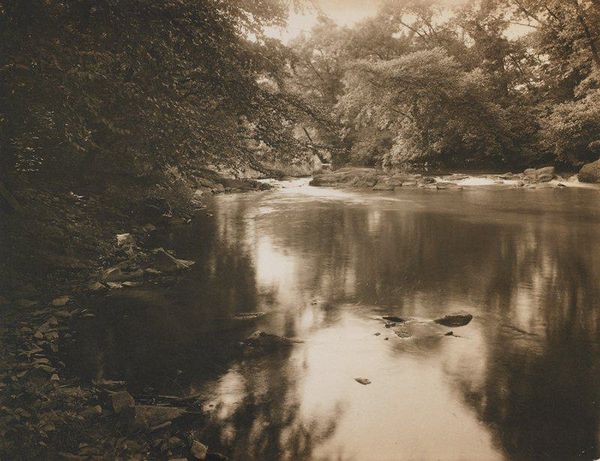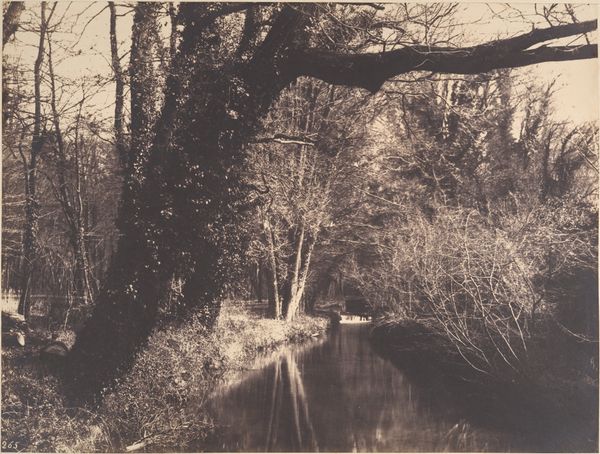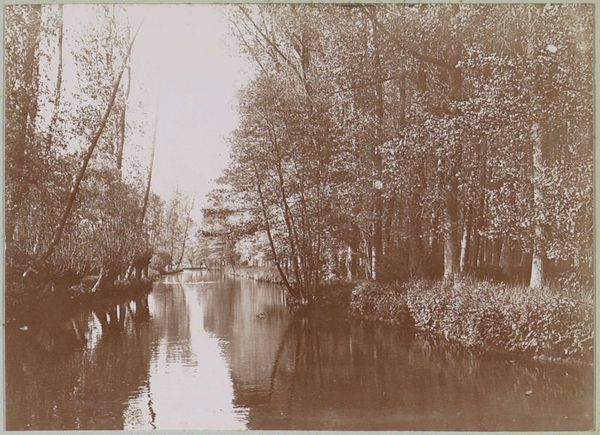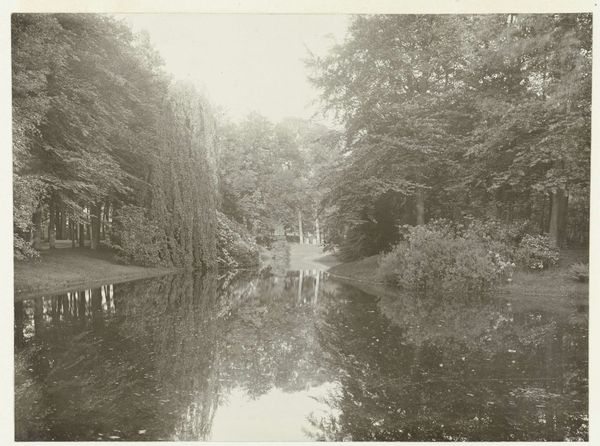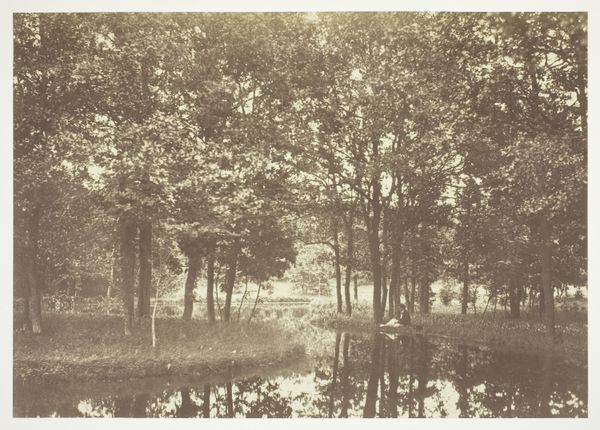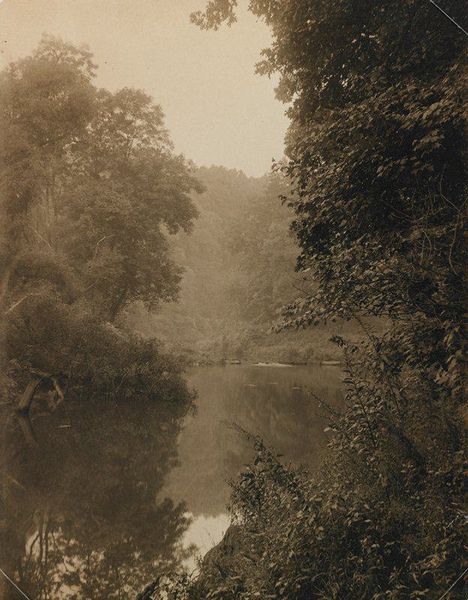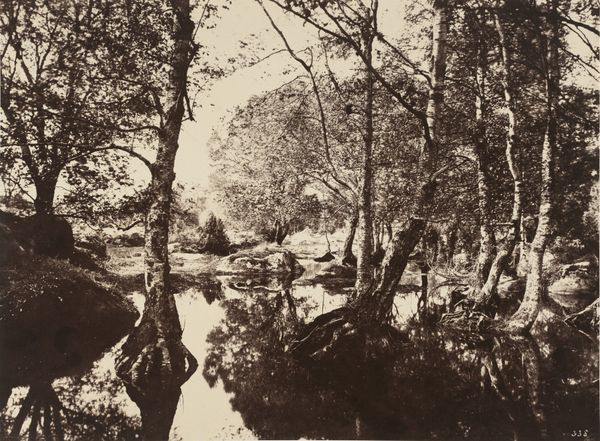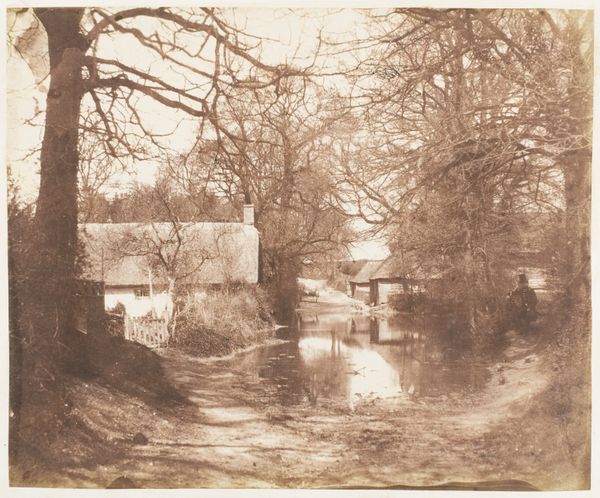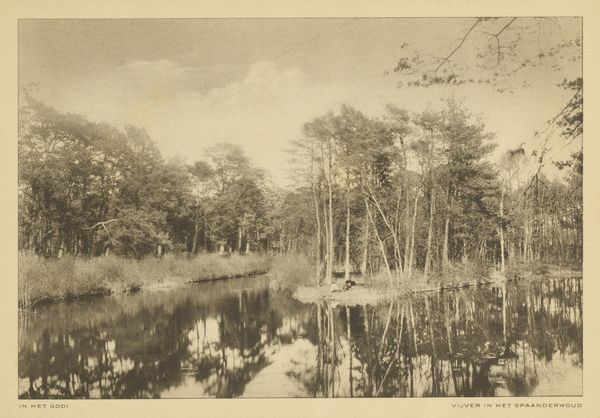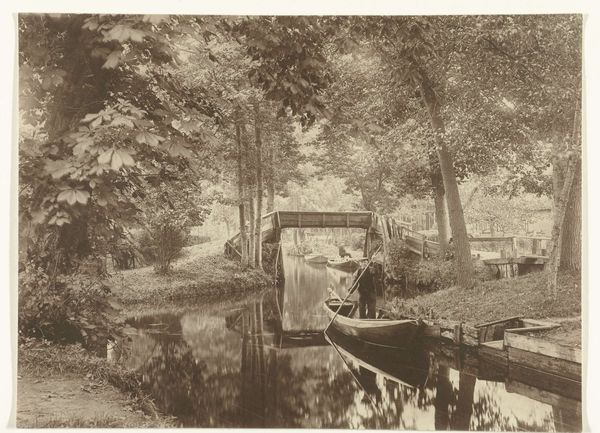
#
countryside
#
nature photography
#
are beginner nature
#
natural composition
#
nature colouring
#
agricultural
#
nature
#
nature friendly
#
nature heavy
#
nature environment
Dimensions: height 168 mm, width 225 mm
Copyright: Rijks Museum: Open Domain
Curator: We're looking at "Gezicht op beek en bos," or "View of a Stream and Forest," a photograph by Richard Tepe, dating from somewhere between 1900 and 1930. It's currently held at the Rijksmuseum. Editor: My first impression is one of serenity. The monochrome palette softens the landscape, emphasizing the gentle reflections in the water. The composition feels meticulously balanced, almost classical. Curator: Absolutely. And Tepe, though perhaps not a household name, was deeply embedded in debates around Dutch identity in that era. Consider the broader cultural context; there was an intense push to define a national character. Images of the countryside—carefully curated views such as this one—became powerful symbols of an unspoiled, idealized "Dutch" landscape, implicitly excluding the rapidly growing urban centers and their diverse populations. Editor: From a formal perspective, I’m drawn to the tonal range. The subtle gradations of light and shadow create depth and texture, particularly in the foliage and the reflections. There’s a remarkable level of detail, especially considering the technology of the time. Note how the artist is framing our view through the darks in the borders drawing our eyes into the source of light in the midground. Curator: It's easy to read this image as simply a "natural" scene. But the very act of framing nature in this way is a statement. It evokes ideas about the sublime, doesn’t it? Romantic notions about the purity of nature and how it speaks to the human spirit. What are often elided are questions about whose nature is represented, and who gets to access or even control it. Who owned this land and how did this ownership reflect the socio-economic structure of the period? Editor: A fair point, yet the composition’s power remains. It has an underlying structure that evokes a sense of calmness. The water serves almost as a mirror, doubling the visual information. In that sense, the interplay between the real and the reflected, could serve as a semiotic message: there is always more than one reading to things, if you look. Curator: I see this image as less about untouched wilderness and more as a carefully cultivated narrative. This photograph presents a specific and controlled vision of the Dutch countryside, implicitly linked to constructions of national identity during a period of considerable social and political change. Editor: It seems to me the appeal here resides in its balance and careful use of light and shadow and, whatever else it evokes, its beauty resides on how skillfully rendered those formal aspects are.
Comments
No comments
Be the first to comment and join the conversation on the ultimate creative platform.
